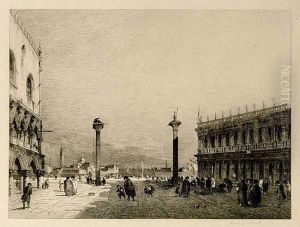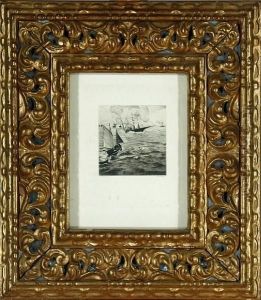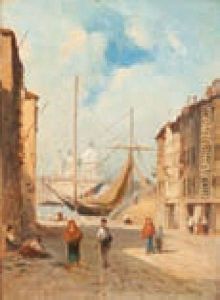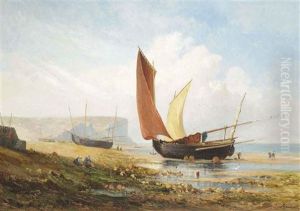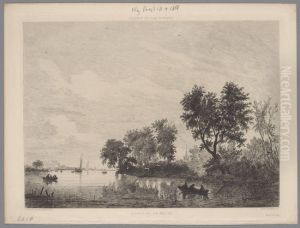Leon Gaucherel Paintings
Leon Gaucherel, born in 1816 and deceased in 1886, was a French engraver whose work is distinguished by its technical proficiency and aesthetic quality. Gaucherel's contributions to the field of engraving span across the mid to late 19th century, a period marked by significant transitions in the art world, from the Romantic movement to the beginnings of Impressionism. Despite these stylistic shifts, Gaucherel's work maintained a consistent dedication to the traditions and craftsmanship of engraving, making him a notable figure among his contemporaries.
Gaucherel was trained in the classical tradition of engraving, which emphasized meticulous attention to detail and a deep understanding of both composition and the interplay of light and shadow. He was adept at both line engraving and etching, techniques that allowed him to explore a wide range of subjects with precision and depth. His works often depicted landscapes, architectural views, and historical scenes, reflecting the popular tastes of his time as well as his personal interests.
Throughout his career, Gaucherel collaborated with many of the leading artists and publishers of his day. He was involved in various significant projects, including the illustration of books and the production of prints that were highly sought after by collectors. His engravings were celebrated for their clarity, depth, and the ability to convey the texture and atmosphere of the scenes he depicted. This acclaim earned him a place among the notable engravers of the 19th century in France, a testament to his skill and dedication to his craft.
Despite the advent of photographic processes and other technological advancements that transformed the production of images in the 19th century, Gaucherel's work remained relevant. His ability to capture the essence of a subject and present it in a manner that was both artistically compelling and technically superior underscored the continued importance of traditional engraving techniques. Leon Gaucherel's legacy is that of a master engraver whose work bridged the gap between the classical and modern, contributing to the rich tapestry of 19th-century French art.
